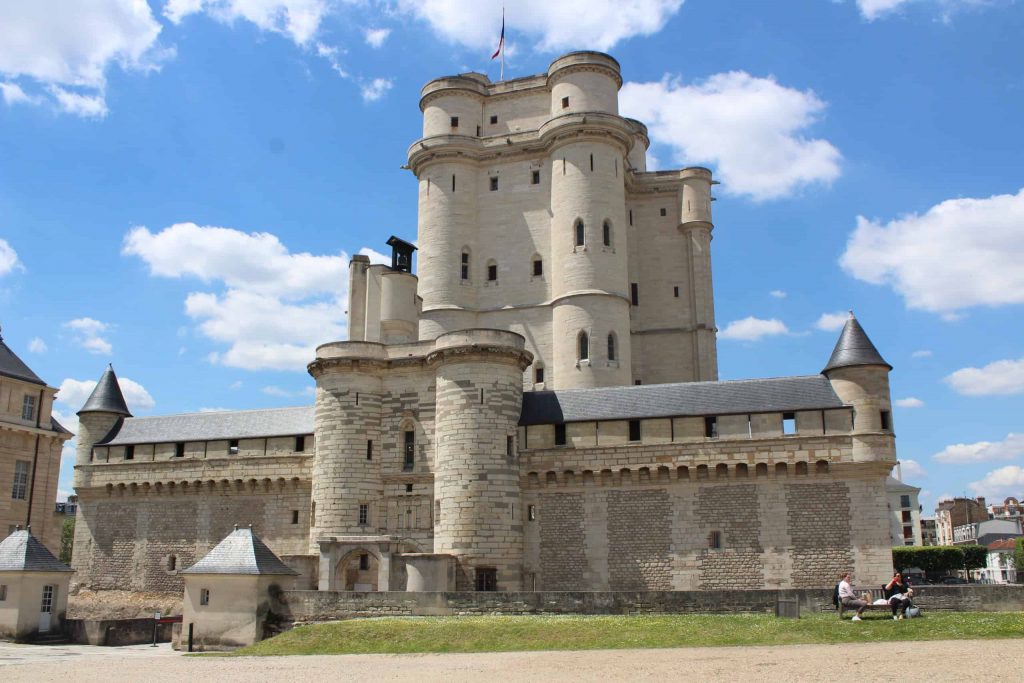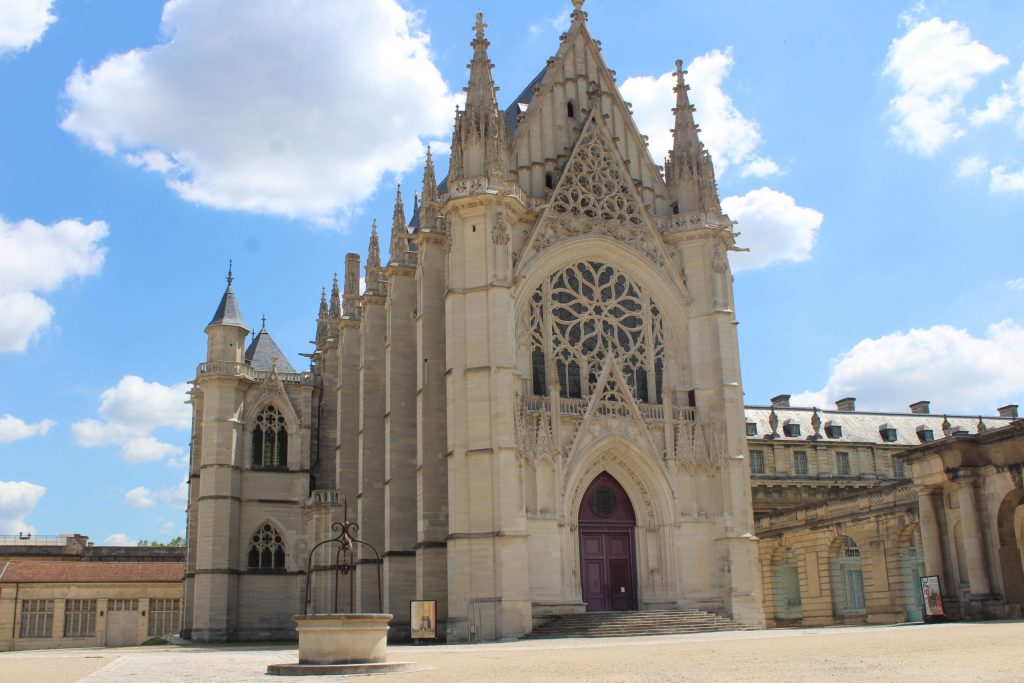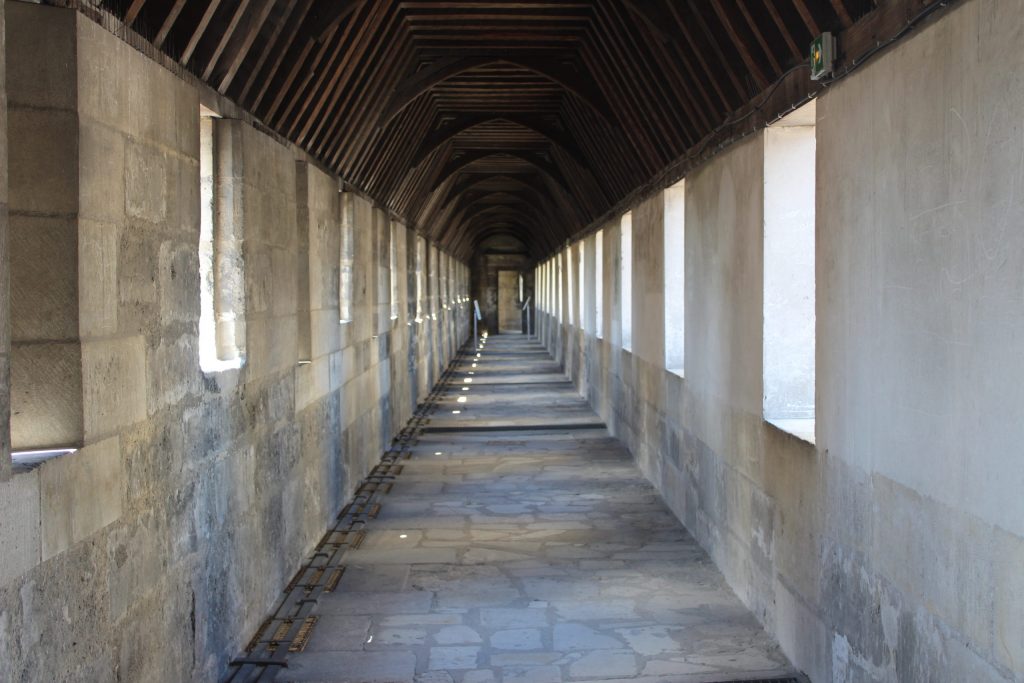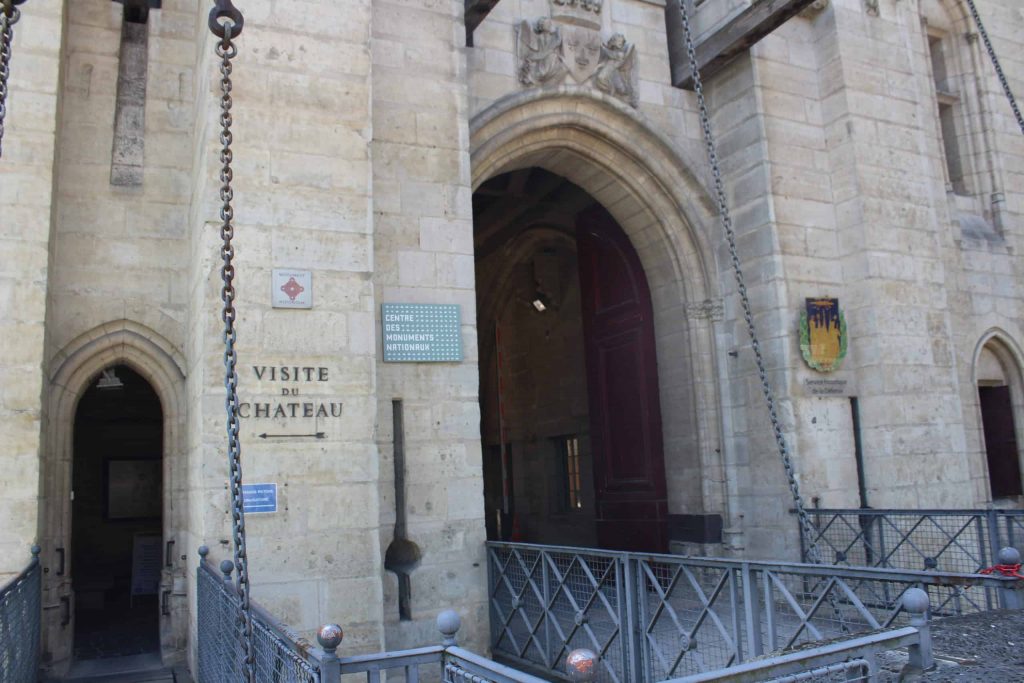
Late last summer, I purchased the Passion Monuments card from the Centre for National Monuments. It was a challenge, of sorts, to see how many national monuments I could visit in a year. A completely self-imposed challenge, for sure, but it was exciting to imagine all the castles I’d visit with this card. Less than two months later, France went back into lockdown, the monuments closed, and the Passion Monuments challenge went on hold. However, now that everything is back open, the challenge is officially back on. And it was only fitting that the first national monument I visited with my card was a castle. The Chateau de Vincennes, to be specific. A wonderfully preserved royal residence on the east side of Paris.
The Chateau de Vincennes, like so many other royal residences in France, began life as a royal hunting lodge, with construction dating back to the mid-12th century. It later became the official royal residence of the French monarchy in the 14th century, most notably during the reign of Charles V. Two kings were married in the castle and three died there, and for centuries, France was governed from its rooms. In fact, the Chateau de Vincennes was held in such high regard, it was chosen as the location to hold the relics of the Crown of Thorns while Sainte-Chapelle was being built on the Île de la Cité. After the relics departed, a chapel was built in their wake that was modelled after Sainte-Chapelle. This chapel survives virtually intact to this day (pictured below), and dates back to the 14th century.

The Chateau de Vincennes lost its status as a royal residence in the 18th century when the monarchy abandoned it for Versailles. No longer a home for kings, it found itself being re-purposed as a state prison for the next several decades. Famous prisoners who were held there include the Marquis de Sade (yes, the Marquis de Sade), Denis Diderot, and the Comte de Mirabeau. The Chateau de Vincennes was later used as a political prison when the Revolution broke out and the Bastille was demolished. To this day, the markings left by these prisoners can still be seen on the castle walls.
The Chateau de Vincennes stopped being a prison in 1796, but continued to be used for military purposes, mostly as an arsenal. It was here, in 1814, that General Daumesnil faced down the advancing Sixth Coalition during the Napoleonic Wars. He famously declared, “I shall surrender Vincennes when I get my leg back.” To understand the meaning behind that statement, you should know that Daumesnil had previously lost his left leg in battle. His stubbornness proved to be correct, as he managed to hold off the Coalition forces with only 300 men under his command. King Louis XVIII eventually had to order him to leave the castle. I’d like to imagine that even then, he only did so begrudgingly.

Today, in addition to being a national monument, the Chateau de Vincennes is home to the archives of the French Ministry of Defence. It also serves as the location of historical services for the French Army, Air Force, and Navy, as well as medieval reenactments. However, the day that my friend and I visited, the site was virtually empty, meaning we more or less had the place to ourselves. As we navigated the empty hallways, it was hard to imagine that this was once the bustling heart of the French monarchy. However, it was also an incredible way to see the site. It was certainly much preferable to the shoulder to shoulder crowds of Versailles.

All in all, it was an extraordinary castle to visit. The Chateau de Vincennes is remarkably well preserved, and in my opinion, it’s basically a Hollywood stereotype come to life. There actually is a moat running around the towering fortress walls. The rooms are all made of stone arches with grand fireplaces. And the entrance to the castle is literally via a hinged drawbridge, complete with chains for raising and lowering it. In so many ways, it was like walking onto a movie set. That’s why I highly recommend that you take a couple of hours to visit the next time you’re in Paris. It’s easily accessible by the line 1 Metro, and it is most definitely worth the trip.
Laura Moore is a professional storyteller who loves history and the many stories that make Paris one of the most fascinating cities in the world. Join one of her signature tours to learn the story of a city.



